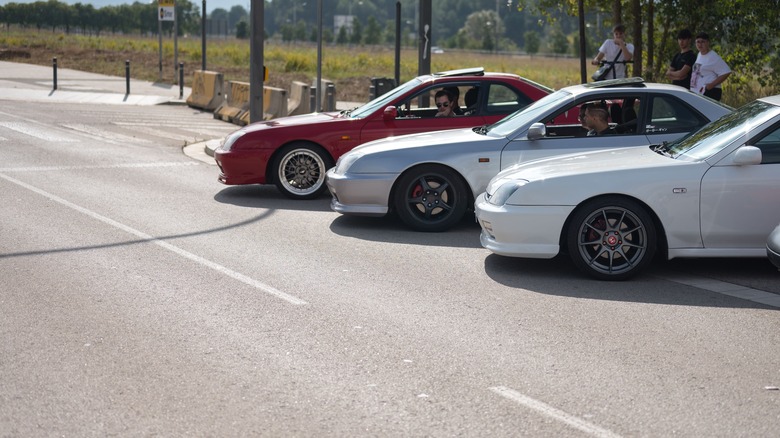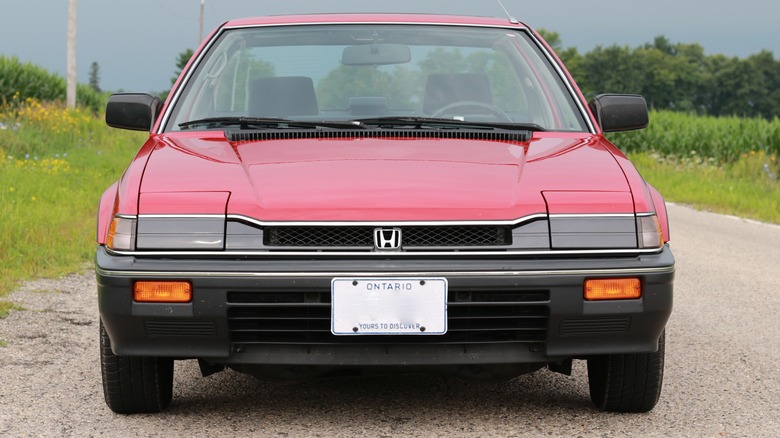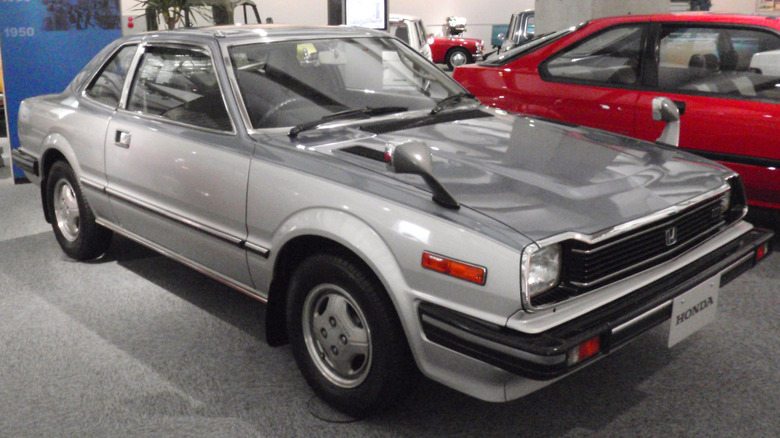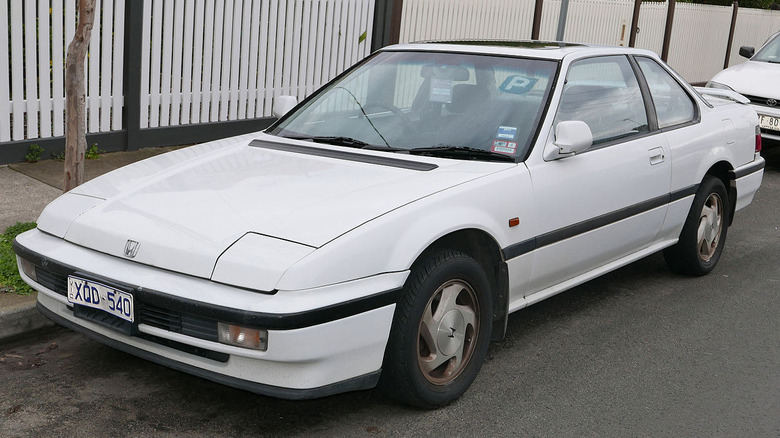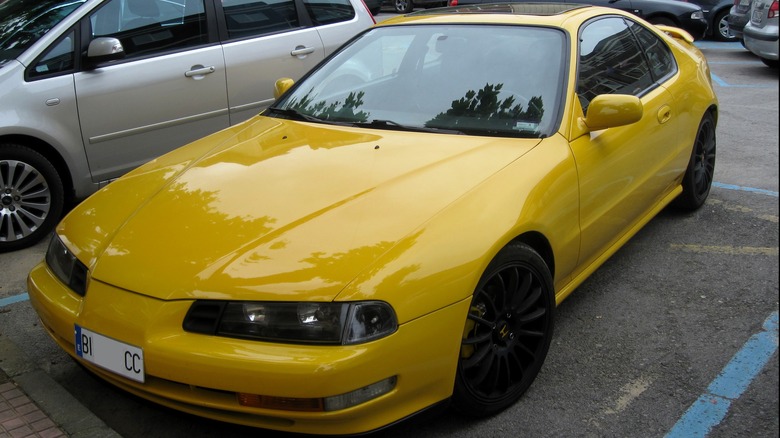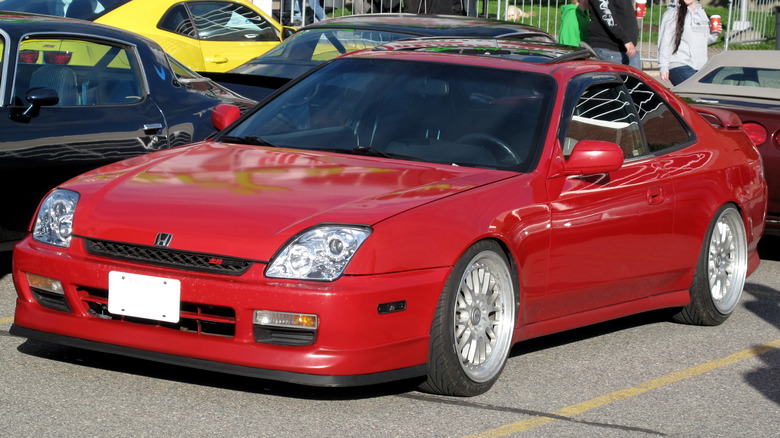Every Generation Of Honda Prelude Ranked, Worst To Best
With the introduction of the Fast & Furious franchise and the famed K-series engine back in 2001, Honda has been a leader in the tuner car culture. But it didn't start there. Honda has been developing street machines with a sporty bent since at least the 1970s, and perhaps none mark the growth of the company as well as the Honda Prelude.
They are often remembered in North America as a '90s car, but Preludes have a history that stretches all the way back to the 1970s. Over five generations, Honda gradually improved the Prelude until it gained cult status as an affordable but formidable sports car near the top of the Honda line.
In the late 1970s, Honda sought a competitor to compete against rival Toyota's popular Celica. The Celica appealed to young drivers seeking a sports-oriented experience, and it delivered so successfully that it inspired Honda to get in on the action. The result was the Honda Prelude. Initially underpowered and with polarizing design features, the Prelude was nonetheless successful enough to birth five generations, each introducing new features and better powerplants until Honda retired the name badge in 2001.
The two-decade run created some of Honda's most famous sports coupes. Honda's mid-market sports car remains a beloved platform for tuners and restorers alike. The Prelude has grown into an authentic collector item. In honor of the Prelude's legacy, SlashGear looked at design, styling, affordability, power, legacy, and value in our guide to every generation of Honda Prelude ranked worst to best.
2nd generation (1983-1987)
The 2nd generation Prelude took steps in performance that would set it on the path to the reputation it enjoyed by the end of the 20th century. A 1.8 liter, dual carb 4-cylinder cracked the triple digits with 105 horsepower. Sure, it's not an asphalt-melting Dodge Hellcat, but let's put it another way: the 2nd Gen represented a respectable 15% increase in horsepower over the 1st generation, and that is not where the improvements ended. Based on an all-new platform, other changes include double-wishbone suspension and upgraded rear struts for improved handling and styling that kept the swept-back, long-hood look but added pop-up headlights.
Latecomers to the party also had the option of purchasing the Prelude 2.0 in 1986 and 1987, which upped displacement to 2.0 liters. The fuel-injected 2.0 included 4-valves per cylinder and produced 158 horsepower. Considering the 1986 Z28 put out 193 horsepower with a V8 helps put the Prelude into perspective as a true competitor coming into its own.
Collectors and modders have discovered the 2nd generation Prelude. At an average price of $14,000, on the aftermarket, with a stunningly high sale price of $79,000, there is a significant increase over the cost of owning a first generation, but there is still time to jump in before they become out of reach. Its design is firmly 1980s, and lacks the distinctive design cues of the 1st generation — but not in a good way. Relatively high cost and outperformed by later generations, the 2nd gen lands last on our list of Prelude ranked worst to best.
[Featured image by PeteCaz via Wikimedia Commons | Cropped and scaled | CC BY 4.0 DEED]
1st generation (1978-1982)
The mission was to kill Toyota's Celica. Sporty design slapped over a sedan undercarriage, appealing to a youth demographic wanting a sporty experience. The first iteration of the Prelude may look out of date by today's standards, but the boxy fastback with its stalk-eyed mirrors came off as pretty futuristic in 1978.
From 1978 to 1982, they took square aim at (or inspiration from) the Celica, right down to the stalk-eyed, fender-mounted mirrors on the debut model. (Under)powered by a 1.6-liter inline four-cylinder mated to a standard five-speed manual transmission, the puny Prelude produced around 85 horsepower and 93 lb-feet of torque and cut a 19-second 0-60 mph time.
With styling that can best be described as an acquired taste, the Prelude might turn heads if only for people to wonder exactly what it is. A four-year production run put about 1720,000 1st-gen Preludes on American streets. Though stock power isn't going to blow anyone away, the 1st Generation Prelude is a conversation starter as a restoration project, and they come cheap enough that rebuilding with modern components is a viable project. The average cost for the 1st generation Prelude is about $6,000 on the used market. K20-powered Prelude, anyone?
If nothing else, the 1st Generation Prelude has something to say for it, not just as the introduction of a legend but something true enthusiasts can snag for a moderate price. As the years pass, expect the inaugural Prelude to become a collector's piece, snagging fourth on our list for its affordability, unique design, and status as a (near) future classic.
[Featured image by 6D via Wikimedia Commons | Cropped and scaled | CC BY 2.0 DEED]
3rd generation (1988-1991)
The third-generation Prelude switched to the 2.0 liter full-time and came with styling that looks far more modern by today's standards. Consumers could expect the bare minimum of 108 horsepower, which could go up to 150 depending on the package. What makes the 3rd generation of interest to collectors and modders is its beloved B-series motor in either automatic or five-speed manual configuration. Highly adaptable, the four-cylinder has garnered a lot of attention from the aftermarket, making the 3rd gen Prelude something of a darling for tuners.
The 3rd generation comes with an intriguing and complicated quirk: four-wheel steering. While not unheard of, the system in the Prelude was mechanical, unlike competitors Mitsubishi and Mazda, making it cheaper to produce and less complicated to work on. The pop-up headlights remain, and the discerning viewer can see hints of late-gen Preludes in the styling. The third-generation Prelude reminds one of a two-door Accord and lacks the edge of the sporty edge of the 4th and 5th Generations. It could make a great sleeper car for the enterprising mechanic. Lure your prey to the starting line with out-of-date looks, then uncork a turbo B20A3 on them for laughs.
The third-generation Preludes are still very attainable. They are on price par with the second generation, with an average market cost of about $14,000, but the ceiling is much lower, with a high price of $33,000. What makes the 3rd Gen something special is the B-series engine and the plethora of possible modifications that come with it.
4th generation (1992-1996)
The Acura NSX may have been at the top of the Honda heap in the early '90s, but the fourth-generation Prelude makes an admirable effort for those without a supercar budget. Ditching the angular designs of the '80s, Honda revamped the Prelude with an aggressive posture and the most power yet.
The fourth-gen body is the first of the Preludes that, while dated, is not so dated that you hear Tears for Fears while looking at it. The long hood and short rear deck make it look like it's in motion even when standing still, and a healthy aftermarket provides body kits for anyone who wants to change it up. Displacement continued to creep upwards, with the fourth generation introducing a 2.2-liter engine with (drum roll, please) Honda's vaunted VTEC technology that kept performance up throughout the entire powerband. Optional rear-wheel steering might appeal to SCCA weekend warriors looking for a track machine.
The fourth-generation Prelude is in that no-man's land of not being old enough to be a classic but not modern enough to keep up with today's technology. The result is a sweet spot of pricing, with the average fourth-gen selling for just over $11,000, with a high price of around $22,000. Tuners, first-time car buyers who want something sporty, or even Sunday-drive enjoyers would do well to peek at an affordable 4th-generation.
[Featured image by Spanish Coches via Wikimedia Commons | Cropped and scaled | CC BY 2.0 ]
5th generation (1997-2001)
The fifth-gen Prelude represents the final form for Honda. News about a Honda concept with the Prelude name badge hit the streets last year, teasing fans with the possibility of a production version, but ultra-cool concepts that never saw the roads litter the history of automotive development.
The best a Prelude fan can do for now is the fifth and final iteration, produced between 1997 and 2001. The 2.2-liter H22 powered every version of the Prelude, meaning those who shelled out for a fifth generation got the 195 horsepower and 156 lb-feet of torque it produced. No longer offering rear-wheel steering, the final Prelude takes design cues from each of the previous generations for its final form, combining hard planes with soft curves that give it something of a timeless look.
Unsurprisingly, the most modern Prelude tops our list of Preludes ranked worst to best. With an average price in the same range as the fourth and third generation, the final version is an ultra-worthy platform for anyone, from those looking for a fun grocery-getter to the full-on mod maniac taking it to track days. Honda's reliability, reasonable pricing, and technology have aged well, making the Fifth-Generation Prelude a bargain in the best possible sense.
[Featured image by Elise240SX via Wikimedia Commons | Cropped and scaled | CC BY 4.0 ]
Methodology
Different drivers have different desires for their cars, but fans of anything from Honda history to building a fire-breathing racer in their garage can get something out of the Prelude. SlashGear looked at Honda's mission when developing the Prelude and evaluated them based on affordability, desirability, power, and legacy in a world filled with car choices.
The Honda Prelude is a bona fide piece of car history, but the latest iterations still have much to say for them in terms of performance. It all comes down to your needs and preferences. Our list of Honda Preludes ranked worst to best is not a buyer's guide, but it should shed some light on where to start if you're interested in this piece of automotive history.
